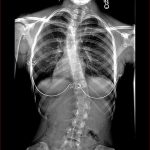Natural Dental Treatments for Cats
Supplementing with Vitamin C and CoEnzyme Q10 can help promote the health and healing of gum tissue.
GREENIES can work wonders to remove tartar from cats teeth in just a few weeks.
Best natural cat dental care for healthy cat teeth:
- HomeoAnimal detox and tartar remedies for dental care
- Coconut oil and kelp DIY cat toothpaste
- Rub sterile gauze on cat teeth to clean
- Raw meaty bones keep cat teeth healthy
- Catnip ball for healthy chewing
Source: https://www.caticles.com/cat-dental-health-how-to-help-keep-cats-teeth-clean/
In the wild, the carnivore’s diet and eating habits keep the teeth clean and strong. However, the typical diet of a domestic pet — typically commercial dry or canned food — does not. Therefore, proper dental care throughout your pet’s life is essential to optimal health.
Dental disease is the #1 most common health problem seen by veterinarians.
Some of the substances secreted by mouth bacteria cause inflammation of the gums (gingiva), resulting in gingivitis. Untreated, inflammation can progress and even break down tissues in the mouth, leading to periodontal disease. Eventually, infection and erosion cause the teeth to decay, abscess or fracture. Decayed, broken, and abscessed teeth are very painful, and may hinder the animal from taking in enough nourishment. They also deteriorate the pet’s quality of life.
There are other serious health risks associated with tooth decay. Bacteria living in these “slums” can enter the bloodstream and seed infection in critical organs like the heart, liver, and kidneys; as well as causing inflammation in joints and other areas. In my personal experience, many a cranky critter has become happy and playful again after hidden dental problems were corrected.
A healthy diet plays a role in a healthy mouth and is just as important as regular dental exams and care by a veteranarian. One persistent myth that is completely false is the notion that “dry food cleans the teeth.” The best that can be said for dry food is that it may produce slightly less tartar than canned food. Pets eating only dry food can and do develop the same dental problems as those that “never touch the stuff.” One study showed that food itself is completely irrelevant; test subjects developed tartar even when fed by stomach tube, even when no food touched the mouth at all! There are a few dry foods that do live up to the claim, but they consist of very large, specially-textured kibbles designed to fracture so that the fragments scrape tartar off the teeth. However, the major ingredients are poor quality (by-product meal, corn gluten meal, corn meal or ground yellow corn, cellulose; Friskies even contains glycerin, a form of sugar – now, how is that good for teeth?!). Plus, these foods suffer from all the usual problems of dry food (extreme processing, high carbohydrates, low moisture). Because of the health risks associated with corn-based dry food (such as obesity, diabetes, allergies, arthritis, FLUTD, and kidney disease), we don’t carry them, or recommend them as a regular diet.
The best way of removing plaque and preventing dental disease at home is brushing the teeth. Ideally, you should brush your pet’s teeth daily. Brushing removes plaque on the outside of the crown (above-gum portion) of the tooth, and stimulates the gums to keep them healthy. However, plaque can still accumulate below the gum line; so an annual check-up is still an essential part of your pet’s dental health. Even if you don’t see any problems, it is best to have your pet’s teeth professionally cleaned prior to beginning a home-care program, to make sure there are no painful areas in the mouth that might jeopardize your success.
- Buy a finger brush and toothpaste designed for pets. Do not use a human brush or even a pet brush on a stick; these can severely injure the gums without you knowing it (other than by your pet’s very negative reaction!). A finger brush is a soft plastic cone with bristles on one side that fits over the tip of your finger. It is very safe and can make brushing tolerable or even pleasant for your pet.
- Cats especially love having their faces rubbed at the corners of the mouth (because of the scent glands there), and most dogs tolerate it and even enjoy it. Gently rubbing in that area is a good place to start. Each time you do, run your finger a little farther forward along the lips.
- Gradually extend your rubbing by slipping your finger under the lips and massaging the gums gently. Take this step slowly and back off immediately if your pet objects. You don’t want to make this an unpleasant experience, so let the pet dictate how fast you progress.
- Put a little pet toothpaste (never human toothpaste!) on your finger when you’re rubbing. Most pets love the taste.
- Put the brush on your finger with a little toothpaste. This will be only slightly different from what you’ve been doing and should be tolerated. If not, remove the brush and go back a step. A piece of damp gauze can substitute for the finger brush.
It’s best to brush every day; then if you miss a day, it’s not a crisis. However, if you plan to brush every other day, and then miss a session, you’ve lost several days that cannot be reclaimed, and plaque will have a good head start.
3. Dental Care Products
There are many dental care products marketed for pets. Oral rinses gels, and water additives will not control plaque by themselves, although they will help with general dental hygiene. The following are my favorite dental products for pets, based on experience and recommendations from veterinary dental experts:
- Only Natural Pet All Smiles Oral Care Spray is a convenient way to aid dental health with one spray a day.
- Triple Pet Oral Care Products include specially designed pet toothbrushes and pastes.
- ProDen PlaqueOff is another food additive that promotes dental health.
Most treats do not do much for dental health, even if they are labeled “Tartar Control.” The exception to the rule is Feline Greenies, which I can tell you from personal experience can work wonders in just a few weeks.
4. Regular Check Ups
Regular check ups are vitally important, especially for the older animal. At least once a month, you can give your pet a general dental wellness check; be sure to lift the lips enough to see the farthest-back teeth, which are often the source of trouble. If you smell an unpleasant odor, see any redness in the gums, or find a lot of tartar buildup on the teeth, then seek the help of a veterinarian. Supplementing with Vitamin C and CoEnzyme Q10 can help promote the health and healing of gum tissue as well.







Leave a Reply